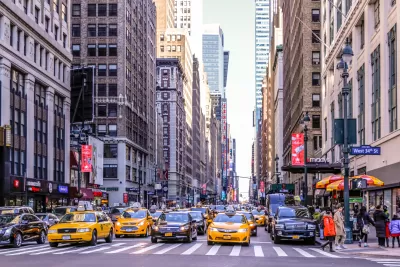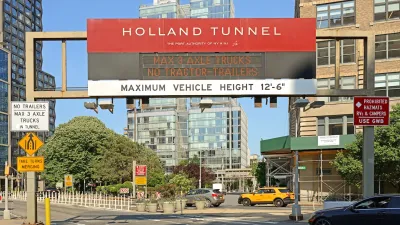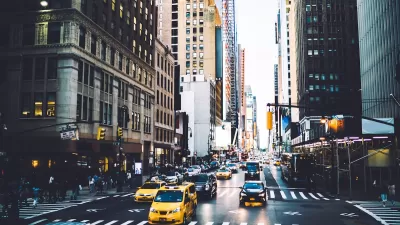Starting this summer, drivers will have to pay a toll to drive through the newly designated Congestion Relief Zone in New York City’s Central Business District.

ABC 7 Eyewitness News reports that, five years after passing in the state legislature, New York City’s controversial congestion pricing plan will go into effect on June 30. During peak hours (5 a.m.–9 p.m. on weekdays, 9 a.m.–9 p.m. on weekends), the toll structure for vehicle travel through the Congestion Relief Zone will be as follows:
- Cars: $15 toll during peak hours, and $3.75 overnight
- Trucks and buses: $24 or $36 (depending on size and purpose) and $6 and $8 overnight
- Motorcycles: $7.50 a maximum of once a day.
- Passengers of taxis, green cabs, and for-hire vehicles: $1.25 per trip
- Passengers of high-volume for-hire services like Lyft and Uber: $2.50 per trip
MTA officials say these tolls will result in 100,000 fewer vehicles entering the area every day, leading to less traffic, cleaner air, and revenue that will go toward public transit investments. ABC 7 also reports the MTA launched a portal for people to learn about eligibility for discounts or exemptions, which they can already start applying for.
The program will be the first its kind in the United States, though congestion pricing is quite popular in Europe. Opponents say the fees will burden workers, result in higher prices of goods transported into the city by truck, and simply shift congestion outside of the zone. There are also multiple pending lawsuits from small business owners and the state of New Jersey that have yet to be. Proponents say if done right, the plan could pave the way for similar congestion pricing plans across the country.
FULL STORY: MTA announces official start date for congestion pricing in New York City

Planetizen Federal Action Tracker
A weekly monitor of how Trump’s orders and actions are impacting planners and planning in America.

Chicago’s Ghost Rails
Just beneath the surface of the modern city lie the remnants of its expansive early 20th-century streetcar system.

San Antonio and Austin are Fusing Into one Massive Megaregion
The region spanning the two central Texas cities is growing fast, posing challenges for local infrastructure and water supplies.

Since Zion's Shuttles Went Electric “The Smog is Gone”
Visitors to Zion National Park can enjoy the canyon via the nation’s first fully electric park shuttle system.

Trump Distributing DOT Safety Funds at 1/10 Rate of Biden
Funds for Safe Streets and other transportation safety and equity programs are being held up by administrative reviews and conflicts with the Trump administration’s priorities.

German Cities Subsidize Taxis for Women Amid Wave of Violence
Free or low-cost taxi rides can help women navigate cities more safely, but critics say the programs don't address the root causes of violence against women.
Urban Design for Planners 1: Software Tools
This six-course series explores essential urban design concepts using open source software and equips planners with the tools they need to participate fully in the urban design process.
Planning for Universal Design
Learn the tools for implementing Universal Design in planning regulations.
planning NEXT
Appalachian Highlands Housing Partners
Mpact (founded as Rail~Volution)
City of Camden Redevelopment Agency
City of Astoria
City of Portland
City of Laramie





























